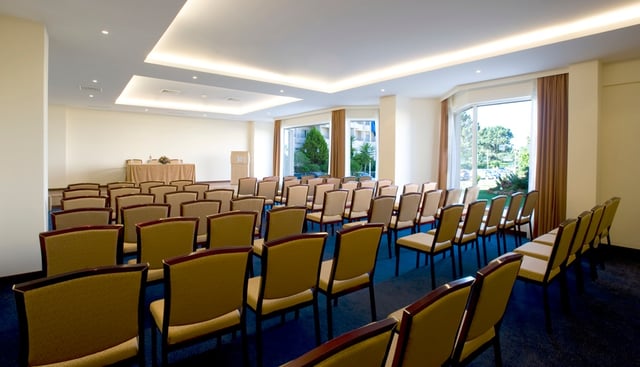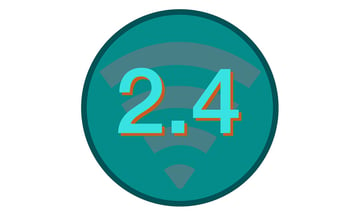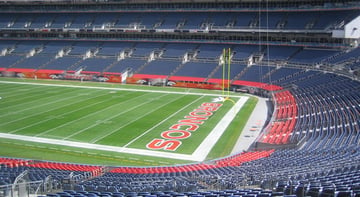- Products
- All Products
- RF PA Extension Kit
- Wireless Microphone Upgrade Packs
- In-Ear Monitor Upgrade Packs
- Wireless Microphone Antennas
- Wireless In-Ear Monitor Antennas
- Antenna Distribution for Microphones
- Antenna Combiners for In-Ear Monitors
- Multi-Zone Antenna Combiners
- Spectrum Tools
- Accessories, Cables and Parts
- Solutions by Venue
- Resources & Training
- Performance Tools
- About Us

Prior to the introduction of Line 6's wireless systems in the 2.4 GHz band, cheap consumer grade microphones were more likely to make use of the 2.4 GHz and 5.8 GHz bands, which gave 2.4 GHz mics a bad rap in the commercial audio world. There was some skepticism as to whether these units could produce CD quality sound. That skepticism was short lived. Line 6 has pretty much proven that great quality is possible in this range, and we are starting to see wider adoption of Line 6 microphone products alongside the roll out of other pro-grade 2.4 systems from more established wireless audio system manufacturers like Shure and AKG. Of note is the widespread popularity of CoachComm and ClearCom’s Tempest intercom systems, which operate in in the 2.4 GHz band in often highly dynamic broadcast and live sports environmentsbroadcast and live sports environments.
In general, 2.4 systems require no coordination, and can be used in almost any country without running into confusing spectrum regulations. This explains why Line 6 is so popular with touring musicians, since they travel internationally and change locations so frequently. But 2.4 isn’t just for musicians! We’re seeing it spread from live sound into other segments of the industry.
John Fitzgerald of The Works, Inc., touched base with us after purchasing eight XD-V75 Line 6 digital wireless systems for corporate productions in the pharmaceutical industry. “I’m always concerned about interference and drop-outs with other simultaneous events going on – not knowing if the other staging company was using the same systems and stepping on our frequencies. This was occurring more often at the venues we were working at, and we had to submit a UHF wireless frequency chart to the hotel ahead of time so they could review and alert us of any conflicts.”
“For our first event using Line 6 systems, we positioned the receivers near the stage and ran feeds back to the board via a snake. There were other events going on and I was alerted by the hotel in-house AV department that they were all using UHF systems, so we didn’t have to worry. We did not experience any issues for the week-long event.”
In John’s particular case, 2.4 GHz mics are an excellent choice, since all the other presenters were using UHF. But there’s a flip side. We asked RF Venue blog contributor Jeffrey Miranda of Neologic Sound to weigh in on 2.4 GHz for installed sound in corporate environments, and he brought up a very good point: “On the one hand, this spectrum range provides far less competition with transmissions coming from TV stations, or emergency radio systems for Fire, Police, etc. However, I wonder if that will be the case in the long-term, or if we will find more and more products operating within this range.”
2.4 shares spectrum with quite a few other devices, not the least of which are wireless routers and other networking equipment. For all practical purposes, both the UHF and 2.4 GHz bands are crowded. The choice between one or the other should be made based on what the spectrum looks like in your area, as well as the features and build quality of the units themselves.
One of the concerns with operating 2.4 GHz wireless microphone systems for corporate events is the prevalence of high powered wireless access points in hotel and convention facilities. This may prove to be the biggest challenge to 2.4 GHz mic adoption, since interference is possible, and the majority of major conference centers already have access points installed. International Association of Conference Center (IACC) certification requires HISA connectivity in all meeting spaces, and strongly recommends the connection be wireless.
Our position here at RF Venue is that the UHF frequency range is not inherently superior or inferior to 2.4 GHz. We manufacture remote antenna systems for both UHF and 2.4 GHz so we have no real horse in this race. There are some small differences that may make one more relevant to your particular application. And we discuss this at length in an earlier post that we encourage you to visit. The take home point is that 2.4 has finally arrived, and is here to stay.
Leading image courtesy Porto Bay Hotels and Resorts
Tag(s):
2.4 GHz CP Beam
Alex Milne
Alex Milne was Product Marketing Manager and Digital Marketing Manager for RF Venue, and a writer for the RF Venue Blog, from 2014-2017. He is founder and CEO of Terraband, Inc., a networking and ICT infrastructure company based in Brooklyn, NY., and blogs on spectrum management, and other topics where technology,...
More from the blog

2.4 GHz CP Beam
Everything You Need to Know about 2.4 GHz Wireless Microphones
5 min read
| January 27, 2015
Read More
-2-1.png?length=360&name=2_4_GHz_Wi-Fi_channels_(802_11b,g_WLAN)-2-1.png)
2.4 GHz CP Beam
Comparing UHF and 2.4 GHz Wireless Microphones
4 min read
| December 15, 2014
Read More

2.4 GHz CP Beam
Broncos Stadium Upgrade a Case Study in Temporary, Event Specific Spectrum Crunches
4 min read
| December 14, 2014
Read More
Subscribe to email updates
Stay up-to-date on what's happening at this blog and get additional content about the benefits of subscribing.

